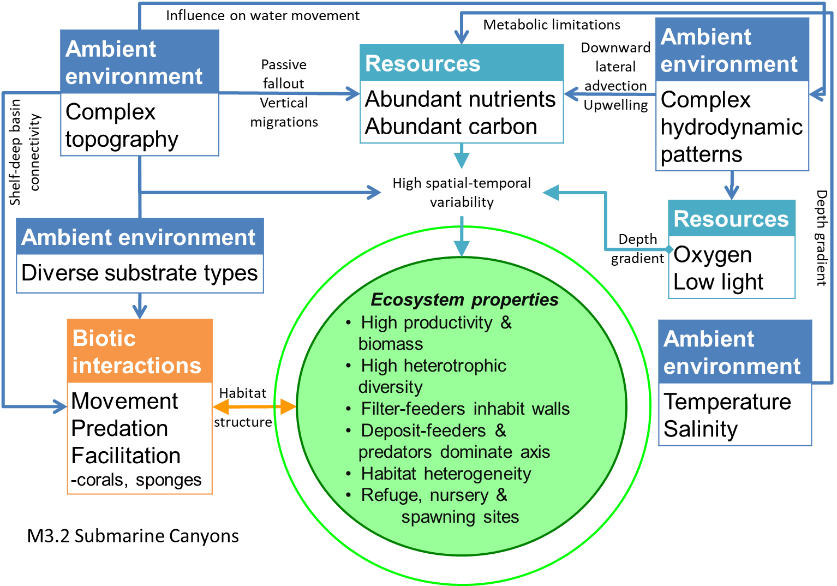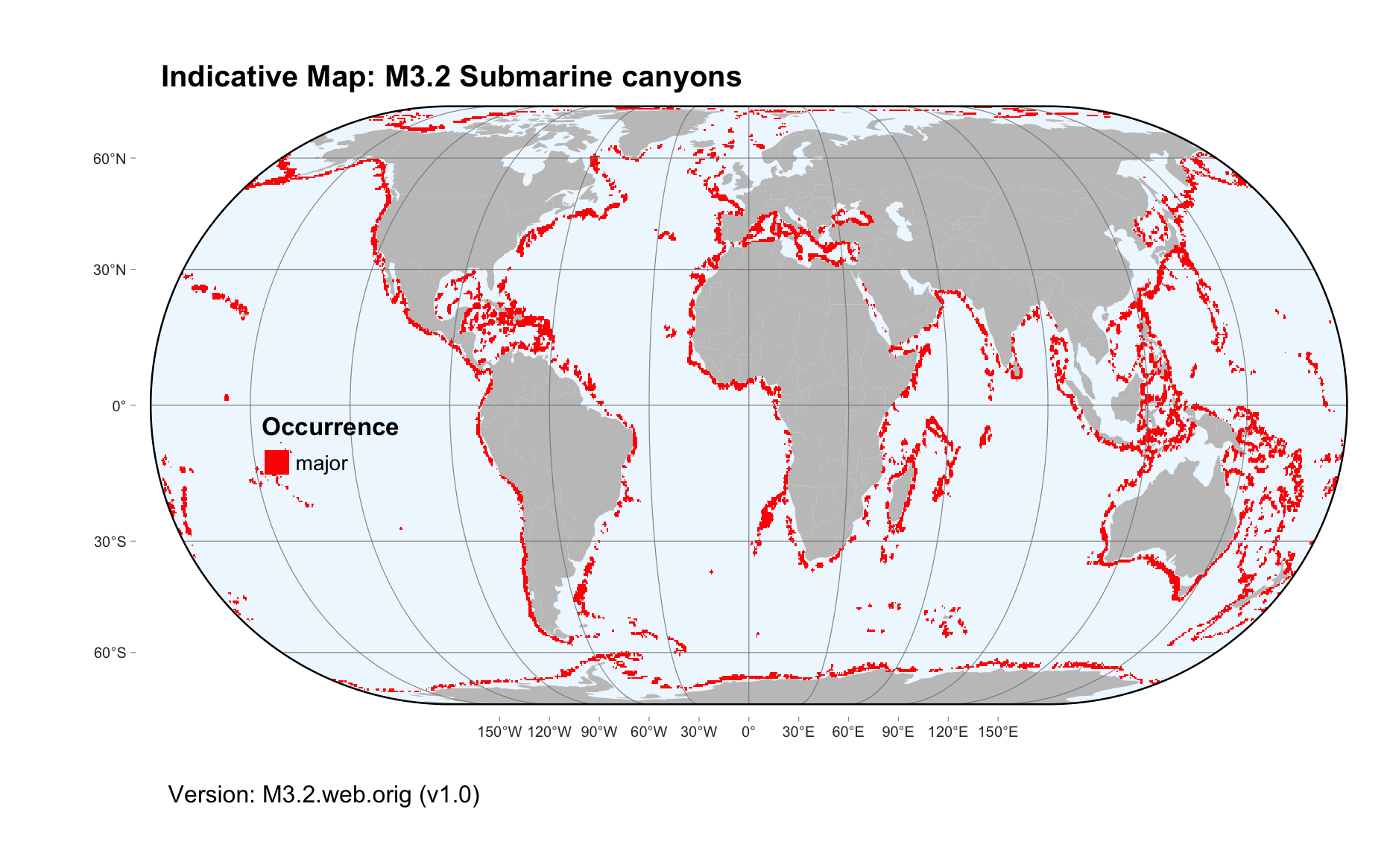Global ecosystem typology
Alternative site for the Global ecosystem typology with additional information for ecosystem profiles and indicative maps.
This site is maintained by jrfep
M3.2 Submarine canyons
Biome: M3. Deep sea floors biome
Contributors:
(texts)
Submarine canyons house some of the most productive and diverse deep sea ecosystems. They can disrupt local currents and channel nutrients from the continental shelves into ocean basins. The flux of nutrients promotes productivity, with high densities of burrowing organisms can live in muddy or sandy bottoms, and filter feeders like cold-water corals inhabit the rocky walls. Canyons provide important shelter, spawning and nursery areas and feeding grounds for many organisms including non-resident megafauna like whales.
Key Features
Dinamics and heterogenous geomorphic features, supporting highly diverse heterotrophic communities through enhaced transport of energy from the continents to the deep sea..
Overview of distribution
Submarine canyons incising continental margins globally.
Profile versions
- v1.0 (2020-01-20): UC Fernandez-Arcaya; E Ramirez-Llodra; DA Keith
- v2.0 (2020-05-28): UC Fernandez de Arcaya; E Ramirez-Llodra; DA Keith
- v2.01 ():
- v2.1 (2022-04-06): UC Fernandez de Arcaya; E Ramirez-Llodra; DA Keith Full profile available at official site
Main references
Selected references for this functional group:
Fernandez-Arcaya U, Ramirez-Llodra E, Aguzzi J, Allcock AL, Davies JS, Dissanayake A, Harris P, Howell K, Huvenne VA, Macmillan-Lawler M, Martín J (2017) Ecological role of submarine canyons and need for canyon conservation: a review Frontiers in Marine Science 4: 5
Diagrammatic assembly model

Maps
Maps are indicative of global distribution patterns are not intended to represent fine-scale patterns. The maps show areas of the world containing major (coloured red) or minor occurrences (coloured yellow) of each ecosystem functional group. See general notes on maps.
There are 2 alternative versions of the indicative map for this functional group, please compare description and sources below.
M3.2.IM.orig_v1.0
Datasets
- GSFM-2014
Map references
Harris PT, Macmillan-Lawler M, Rupp J, Baker EK (2014) Geomorphology of the oceans. Marine Geology 352: 4-24. 10.1016/j.margeo.2014.01.011
M3.2.web.orig_v1.0

Datasets
- GSFM-2014
Map references
Harris PT, Macmillan-Lawler M, Rupp J, Baker EK (2014) Geomorphology of the oceans. Marine Geology 352: 4-24. 10.1016/j.margeo.2014.01.011
Check: the Glossary / Profile structure / the public document